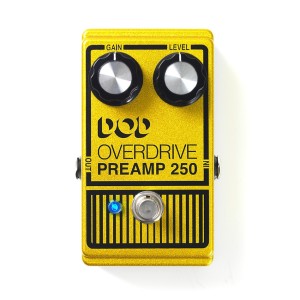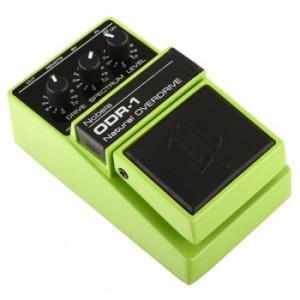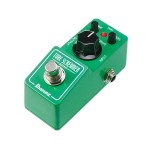Language
Overdrive Guitar Effects Pedal Tips
Using an overdrive pedal is mostly seen with guitar players who want to attain a gain boost that will take a tube amp into the domain of distortion or those who want to color their tone when an amp that is overdriven. Mostly, the majority of players want to have a little bit of both so here are some tips how the overdrive effects pedal can give its maximum to its users.
 Great Overdrive Pedals Under $100[/caption]
Before the amp is powered up, the users should decide what they want to do with their overdrive effects pedal. Those who are looking for a girth and grit to their current overdrive tone, their amp settings should be kept unchanged. For others who want to replace their amps dirty tones with the ones generated by the pedal, the amp should be switched to the clean channel, after which the suitable volume level suited the current surroundings should be set.
Great Overdrive Pedals Under $100[/caption]
Before the amp is powered up, the users should decide what they want to do with their overdrive effects pedal. Those who are looking for a girth and grit to their current overdrive tone, their amp settings should be kept unchanged. For others who want to replace their amps dirty tones with the ones generated by the pedal, the amp should be switched to the clean channel, after which the suitable volume level suited the current surroundings should be set.
 The Difference Between Overdrive And Distortion[/caption]
The Difference Between Overdrive And Distortion[/caption]
Position and Connections
The overdrive pedal should always be placed in front of the amp. When they are connected, the guitar should be plugged into the overdrive pedal and then the same pedal plugged into the amp’s INPUT jack. All beginners should avoid the FX loop, so for the first several uses of the pedal, the guitar-pedal-amp setup should be used.Where to take the Pedal Sound
[caption id="attachment_5126" align="alignright" width="192"] Great Overdrive Pedals Under $100[/caption]
Before the amp is powered up, the users should decide what they want to do with their overdrive effects pedal. Those who are looking for a girth and grit to their current overdrive tone, their amp settings should be kept unchanged. For others who want to replace their amps dirty tones with the ones generated by the pedal, the amp should be switched to the clean channel, after which the suitable volume level suited the current surroundings should be set.
Great Overdrive Pedals Under $100[/caption]
Before the amp is powered up, the users should decide what they want to do with their overdrive effects pedal. Those who are looking for a girth and grit to their current overdrive tone, their amp settings should be kept unchanged. For others who want to replace their amps dirty tones with the ones generated by the pedal, the amp should be switched to the clean channel, after which the suitable volume level suited the current surroundings should be set.
Prepping the Pedal
Firstly, the volume of the pedal should be turned down all the way. If it is not, there is a chance that the volume of sound that hits the amps ends up being too high, which feels very uncomfortable, even dangerous. After this, the tone knob should be set at its center position, which is called 12o’clock, after which it should be placed on 9o’clock. At this point, the unit should be turned on and the volume pushed up until it gets to the same volume regardless if the pedal is on or off. The users might need a couple of times to get this right.Finding the Sound
Those who look for more grit, the gain knob should be left alone and only the volume knob should be used to boost the signal going to the amp. This will provide the sound with overdrive and distortion. For those who want to get all the distortion from the pedal, the volume knob should be left alone and the gain increased, which should keep the volume at comfortable levels. Once the gain and volume are set, the users can play with the tone knob. For many overdrive effects pedal, these knobs will either cut the treble or the bass tones, but a tone knob setting at 2:00 should prove to be generally sufficient. It will give an enough treble and keep a solid bass level at the same time. Once the tone is set, minor changes to volume or gain knobs might be needed for finding the sweet-spot and starting to play. With these tips, anyone will be able to employ their overdrive effects pedal in the best possible manner. Like always, it is important to keep track about the volume levels when turning on the amps, knowing what type of overdrive is the user looking for and then playing with the gain, volume, and tone knob until the perfect overdrive guitar sound is attained.Overdrive And Distortion Guitar Effects Pedals
Your Turn to Sound Off!
How do you use an Overdrive pedal?Let us know in the comment section below!
[caption id="attachment_5124" align="alignleft" width="200"] The Difference Between Overdrive And Distortion[/caption]
The Difference Between Overdrive And Distortion[/caption]
